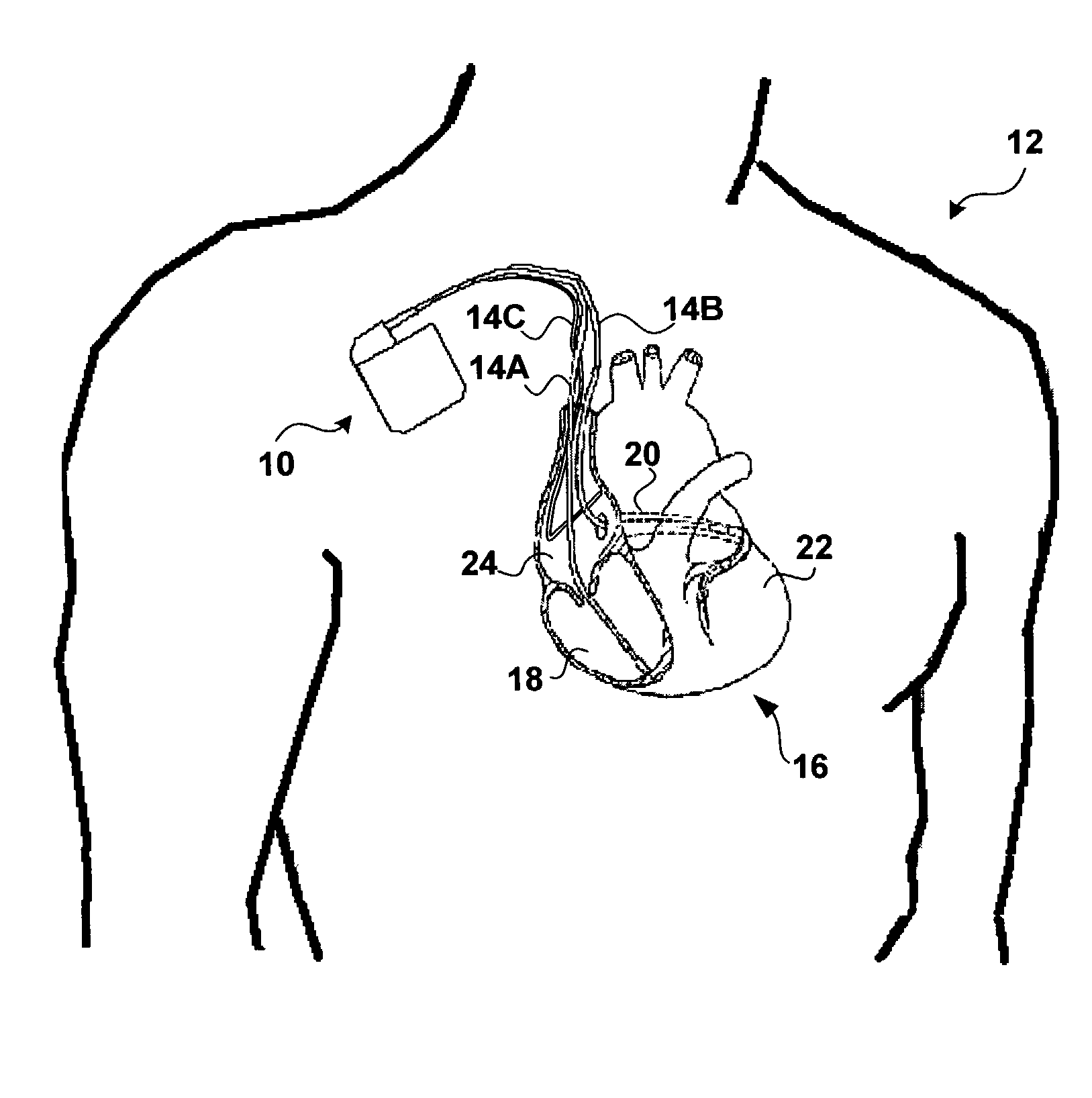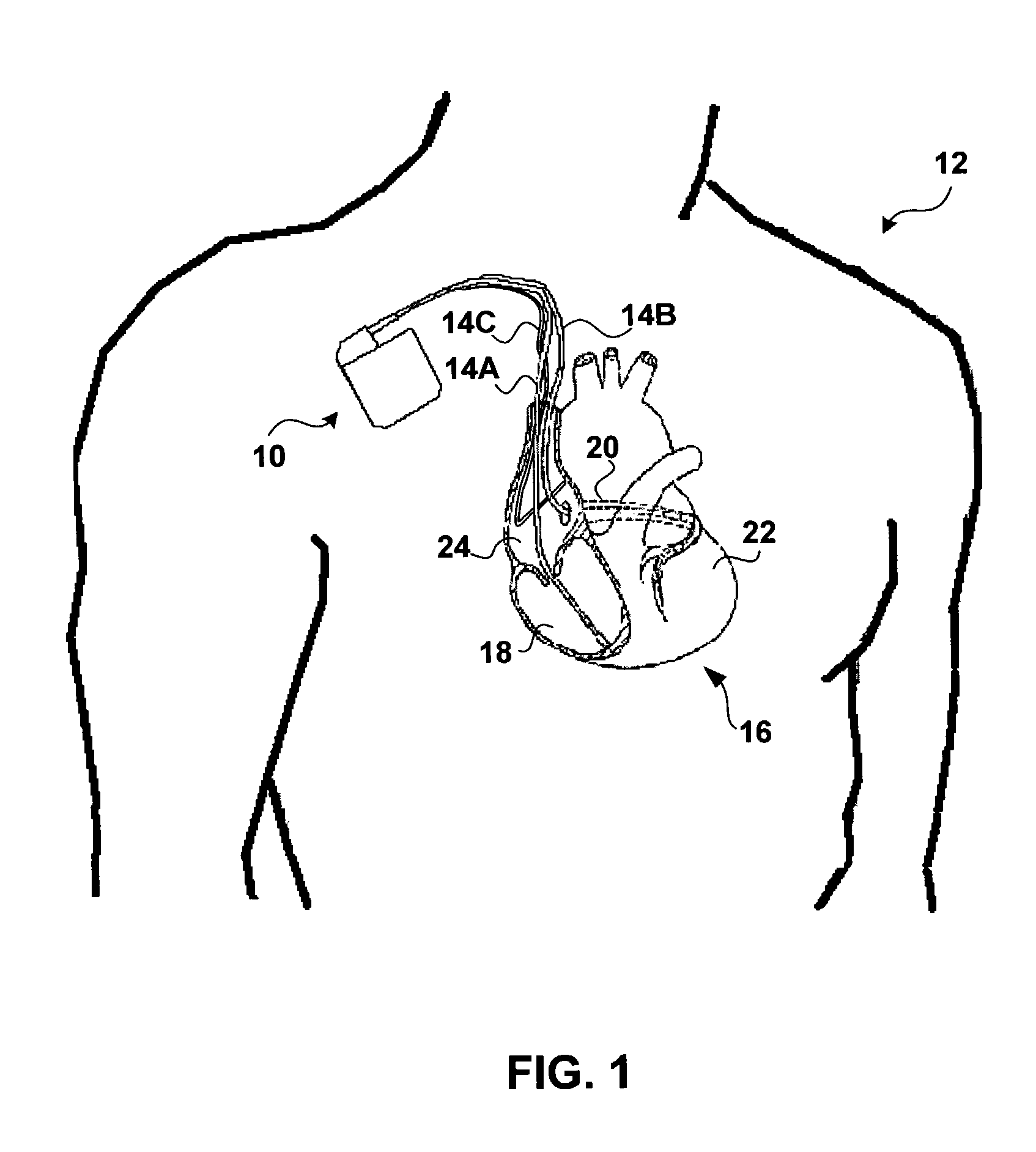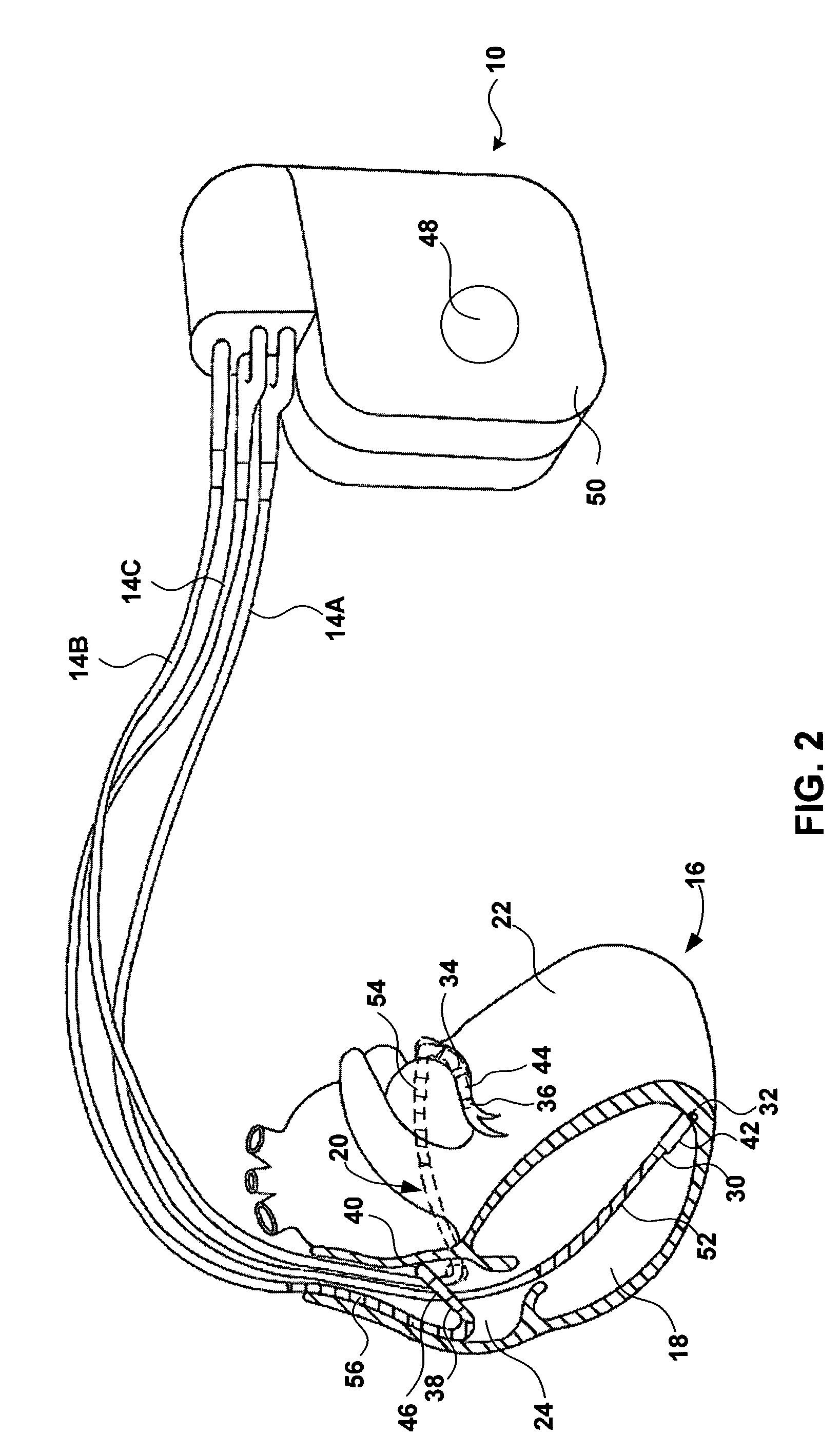Monitoring QRS complex to identify left ventricular dysfunction
a technology of qrs complex and monitoring device, applied in the field of medical devices, can solve the problems of lvd fatigue, more severe lvd, end-organ failure, complex cause-effect interrelationship, etc., and achieve the effect of detecting more quickly
- Summary
- Abstract
- Description
- Claims
- Application Information
AI Technical Summary
Benefits of technology
Problems solved by technology
Method used
Image
Examples
Embodiment Construction
[0020]FIG. 1 is a conceptual diagram illustrating an exemplary implantable medical device (IMD) 10 implanted in a patient 12. IMD 10 may, as shown in FIG. 1, take the form of a multi-chamber cardiac pacemaker. In the exemplary embodiment illustrated in FIG. 1, IMD 10 is coupled to leads 14A, 14B and 14C (collectively “leads 14”) that extend into the heart 16 of patient 12.
[0021]More particularly, right ventricular (RV) lead 14A may extend through one or more veins (not shown), the superior vena cava (not shown), and right atrium 24, and into right ventricle 18. Left ventricular (LV) coronary sinus lead 14B may extend through the veins, the vena cava, right atrium 24, and into the coronary sinus 20 to a point adjacent to the free wall of left ventricle 22 of heart 16. Right atrial (RA) lead 14C extends through the veins and vena cava, and into the right atrium 24 of heart 16.
[0022]IMD 10 may sense electrical signals attendant to the depolarization and repolarization of heart 16 via e...
PUM
 Login to View More
Login to View More Abstract
Description
Claims
Application Information
 Login to View More
Login to View More - R&D
- Intellectual Property
- Life Sciences
- Materials
- Tech Scout
- Unparalleled Data Quality
- Higher Quality Content
- 60% Fewer Hallucinations
Browse by: Latest US Patents, China's latest patents, Technical Efficacy Thesaurus, Application Domain, Technology Topic, Popular Technical Reports.
© 2025 PatSnap. All rights reserved.Legal|Privacy policy|Modern Slavery Act Transparency Statement|Sitemap|About US| Contact US: help@patsnap.com



